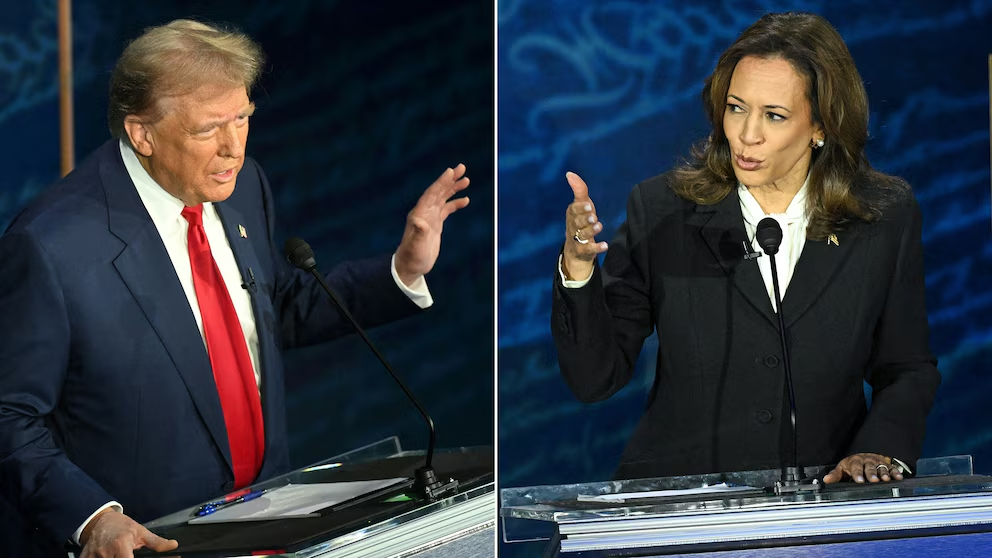In an unprecedented election season, two presidential candidates, who had never officially met, engaged in a fiery debate on Sept. 10.
Learning from the chaotic Trump-Biden debate in June, both the candidates and moderators came into the debate with clear goals and strategies. According to nytimes.com, the Trump campaign engaged in “policy review sessions” with the former president to brief him on the economy, immigration and other areas where he could attack Vice President Kamala Harris’s record. Harris wanted to paint Trump as a stale and unserious candidate who primarily serves his own interests.
The debate covered many controversial topics, including the economy, abortion and foreign policy. Following the debate, the format was contested, as Republicans have accused the moderators of anti-Trump bias. Unlike the previous debate, the moderators fact-checked the candidates in real time. The moderators also struggled to keep Trump and Harris on track, as the candidates failed to provide clear plans for several issues.
“I wish the debate was more issues-based and focused on detailed policy,” Social Studies Teacher Daniel Farabaugh said. “That wasn’t reflective of this debate specifically; it’s just the style of the modern debates.”
The candidates often curated their opinions toward undecided voters, leading to gray areas because of unclear stances. For example, Trump said he plans to repeal the Affordable Care Act and replace it with “something better and less expensive,” but did not state a specific plan.
This ambiguity was common throughout the debate. Senior Ethan Sinclair said, “Harris should have brought up economic policy more and it seemed like she pivoted from the question. I also felt Trump poorly answered concerns about abortion.”
Other students noticed discrepancies as well. Junior Gaby Castillo, who immigrated to America from Colombia, shared her grievances with Trump’s views on immigration policy. She said, “We saw Trump spew logical fallacies and get away with it. As an immigrant, Trump saying immigrants in Springfield, OH are eating peoples’ cats and dogs is an extremely harmful comment to present as fact.” Even though immigration was covered for a large portion of the debate according to abcnews.com, it still left many questioning the next steps to address the border crisis.
Castillo also shared that she felt Harris provided constrained answers on foreign policy. Castillo said, “Harris only mentioned Hamas once in her response to the moderator’s question despite the terrorist organization being a large part of the conflict.”
Both candidates intended to promote their agendas by attacking their opponent’s policies. For example, Trump’s strategy was to highlight unpopular policies from the Biden administration, which Harris was involved in. In response, Harris’s goal was to separate herself from the administration by promoting solutions to the issues Trump addressed. She argued for implementing an “opportunity economy” to curb inflation and hoped for a two-state solution to the Israel-Hamas War.
In the aftermath of the debate, both candidates claimed victory and used the event to bolster their campaigns. Although the implications of the race are still unclear, the debate was widely-viewed, with 67.1 million tuning in according to cbsnews.com.
Since Trump has declined a second debate, the event will provide the only direct comparison between the styles and values of the two candidates before the election in November.

